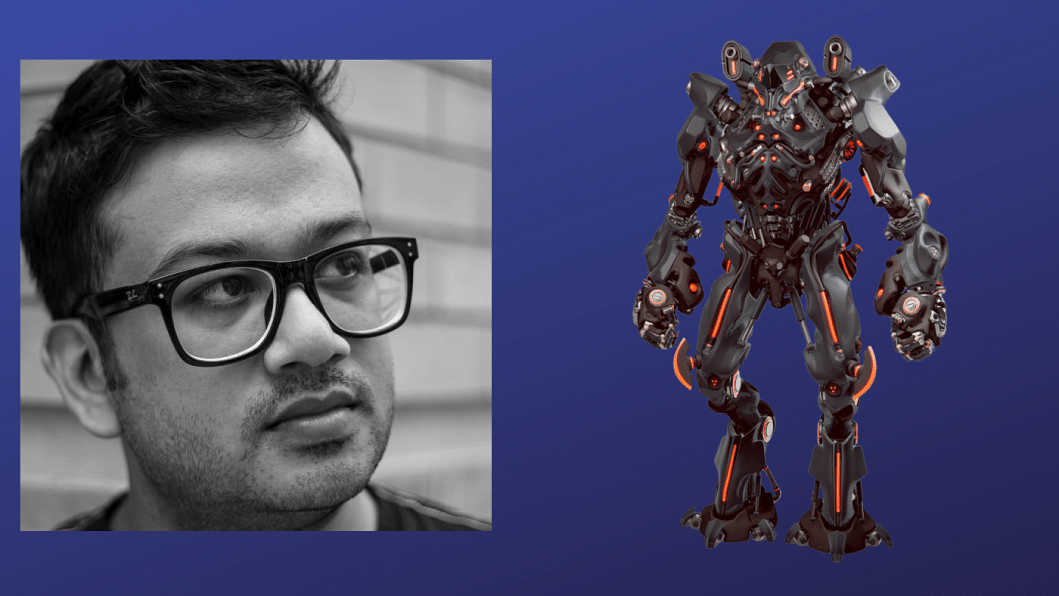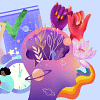Meet one of the art directors behind God of War Ragnarök

Tanvir M. N. Islam is an Art Director for Keywords Canada Holdings Inc, Canada. He began his journey 22 years ago and has gone on to work on some of the biggest AAA titles in the past decade. A self-taught 3D generalist with a bachelor's degree in Fine Arts – Tanvir's skills speak for themselves. SHOUT sat down with him to talk to him about his journey, his advice for aspiring artists and some of his thoughts on the local industry.
Have you always wanted to pursue a career in the video game industry? What made you choose the video game industry?
Computer Generated Imagery (CGI) has always fascinated me, especially things such as character designing and 3D modelling. Naturally, I taught myself the craft and became a digital sculptor. What influenced me from the get-go were movies, specifically Terminator 2 which was a big source of inspiration. The effects and character design in that movie are awe-inspiring. I wanted to emulate whatever the artists were doing on that project.
I never set any stern rules about what form of entertainment I wanted to work in. It could have been films, video games or a different medium. Nonetheless, the workflow behind developing a character would still be the same.
When did you begin your creative endeavours?
My career began as a trainer. I taught people how to use the tools and manoeuvre around the technicalities of 3D software. Eventually, I moved into production where I got to work on different types of commercial projects ranging from music videos to short films. I had been working on such projects for a while then. That went on for 16 years.
Around this time, in 2007, I began working as a senior supervisor at a Denmark-based company called "Click House Studio". While the team I had back there definitely worked on many different kinds of projects, we had never quite worked on video games.
How did you land your current job?
As a self-taught 3D artist, I like to go on a hiatus every now and then. That time is usually devoted to personal projects and teaching myself new things. Maybe I will study the works of existing artists, dive deeper into the world of CGI or just revise. During my last small break, I made some really good work that gained traction on sites such as Artstation, CGSociety and ZBrushCentral. It got featured on important parts of the site where I garnered attention and was approached for a job. The posting was initially in Shanghai, China. I worked there for nearly 5 years before I moved here to Canada earlier last year.
You majored in Fine Arts from the University of Development Alternatives (UODA) and then ventured out to a field that utilises different tools and somewhat of a different skill set. How much has your education helped you get where you are today?
It definitely helped. I began dabbling in 3D software even before I joined UODA. However, pursuing a degree in Fine Arts helped me develop a different approach to my craft. It instilled a fresh perspective where I was taught how to think more like an artist. I deviated from my very software-oriented, technical approach and ventured into new territory.
There are a lot of practices and terminologies in Fine Arts that may be applied to other mediums as well and make the learning curve easier. Things such as anatomy, lighting, and composition rely on your ability to observe and when you can draw from your surroundings, it gives you an edge.
My degree also helped me avoid a lot of unnecessary administrative hurdles when I applied for a visa in China. What a degree does is just give you some breathing room where you can raise your hand just a little higher.
What obstacles have you faced in your journey? How did you overcome them?
The reality of the situation is that there is likely to be a challenge at every stage. My job is very demanding and every day is a challenge. However, I have learned to view them less as hurdles. After all, this is a job I am passionate about. The key is to find joy in your craft. It becomes easier after that. You'll be forced to slow down at every turn but you must persevere.
I am a 3D artist from the Stone Age and have been forced to make do with 512MB of RAM, a 450MHz processor with maybe 10 gigs of storage. The biggest obstacle may be your own mindset. With the volume of online tutorials out there on YouTube and free software such as Blender, there shouldn't be many excuses really.
God of War is inspired by Greek and Norse mythology. Do you think there are folklores and myths in our culture that can lead to similar adaptations?
Every region has its history and culture. If someone took the time and explored, I am certain we could see something come out of it. By telling our own stories, we can produce the best work. But because it is overlooked, we have come to a standstill. We can't compete with the existing international market, nor are we putting ourselves out there. The sad reality is that the people who are capable and qualified don't stick around.
Tell us a bit about your role as an Art Director in the production of God of War Ragnarök.
As an art director, my day-to-day responsibilities included reviewing the assets that our team of artists have made. I'd give them instructions, tell them what to improve and then approve it.
What was your favourite part about the production of God of War Ragnarök?
Working with iconic characters was a very fun experience. An intriguing part of working in this industry is that you never really know exactly which part of the final product you're contributing to. We will design a game asset and be completely blind about which stage of the game it will be included in. The teams communicate in codes and you only end up knowing your bit of the script.
In a country such as Bangladesh, such opportunities are unheard of and very rare. What advice would you give to someone who wants to emulate your career path or follow a similar route?
Nothing matters more than your portfolio. Develop both your soft skills and hard skills. Being very well acquainted with the software as well as having sound artistic integrity are both equally important. Also, try and develop a niche, and carve out your portfolio according to the position you want. For instance, if you want to be a character designer, it is vital that you have a solid grasp of anatomy. On the other hand, for an environmental artist, you must be able to capture the nuances of many different landscapes and atmospheres. Try and conform to the style of the work that you want to do. Most importantly, teach yourself how to learn. It is your foundation that will help the most. Do your research. Be a geek about it.
Abir Hossain is a sub-editor at SHOUT.

 For all latest news, follow The Daily Star's Google News channel.
For all latest news, follow The Daily Star's Google News channel. 









Comments